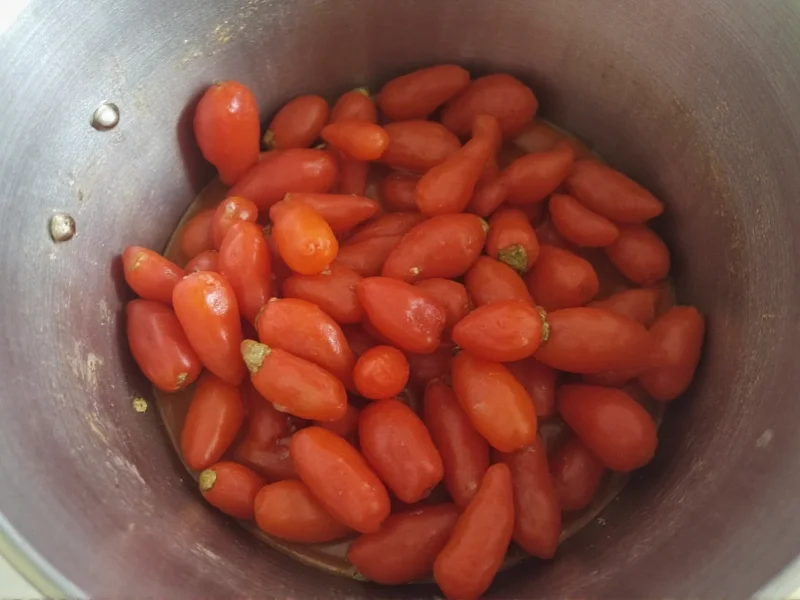When your chili turns out spicier than expected, quick action can save your meal. This common kitchen emergency requires solutions that directly counteract capsaicin—the oil-based compound in chili peppers responsible for heat. Unlike popular belief, water won't help since capsaicin isn't water-soluble. Understanding the science behind spice reduction ensures you choose methods that actually work.
Why Your Chili Became Too Spicy
Capsaicin, the active component in chili peppers, binds to pain receptors in your mouth, creating that burning sensation. The Scoville scale measures pepper heat, with jalapeños ranging from 2,500-8,000 units while habaneros reach 100,000-350,000 units. Accidentally adding too many hot peppers, using potent seeds, or inadequate balancing ingredients commonly causes overly spicy chili.
Most Effective Fixes for Overly Spicy Chili
These solutions work by either neutralizing capsaicin, diluting its concentration, or counterbalancing the heat sensation:
1. Dairy Products (Most Effective Solution)
Milk, yogurt, sour cream, or cheese contain casein, a protein that breaks capsaicin's bond with pain receptors. Whole dairy works best due to higher fat content which dissolves capsaicin oil.
- Add 1/4 cup milk or cream per serving while heating
- Stir in plain yogurt or sour cream just before serving
- Top with shredded cheese which melts into the chili
Pro tip: For immediate mouth relief while eating, have cold dairy ready. The cooling effect begins within seconds.
2. Acidic Ingredients
Acids like vinegar, lime juice, or tomato products help neutralize the pH imbalance caused by capsaicin. They don't eliminate heat but reduce its perceived intensity.
- Add 1-2 tablespoons of tomato paste per cup of chili
- Stir in fresh lime or lemon juice (start with 1 teaspoon)
- Incorporate a small can of diced tomatoes
3. Sweet Elements
Sugar, honey, or maple syrup counteracts heat through flavor balancing. The sweetness creates a contrasting sensation that reduces perceived spiciness.
- Add 1-2 teaspoons of sugar per cup of chili
- Stir in honey (1/2 teaspoon at a time)
- Include sweet vegetables like carrots or sweet potatoes
4. Starchy Additions
Beans, rice, potatoes, or corn dilute capsaicin concentration by increasing overall volume without adding heat.
- Add a cup of cooked beans or lentils
- Stir in cooked rice or quinoa
- Include diced potatoes which absorb spice while cooking
5. Dilution Method
Adding more non-spicy ingredients reduces overall capsaicin concentration. This works best when you have extra time for flavors to meld.
- Double the recipe with additional meat, beans, and tomatoes
- Add vegetable or chicken broth to increase volume
- Mix in cooked grains like rice or quinoa
| Solution | Effectiveness | Time to Work | Flavor Impact |
|---|---|---|---|
| Dairy products | ★★★★★ | Immediate | Mild creaminess |
| Acidic ingredients | ★★★☆☆ | 2-5 minutes | Tangy brightness |
| Sweet elements | ★★★☆☆ | 3-7 minutes | Slight sweetness |
| Starchy additions | ★★★☆☆ | 10-15 minutes | Thickened texture |
| Dilution method | ★★☆☆☆ | 15-30 minutes | Milder overall flavor |
What Not to Do With Spicy Chili
Avoid these common mistakes when fixing overly spicy chili:
- Drinking water - Capsaicin repels water, spreading heat instead of reducing it
- Adding more spices - Creates flavor imbalance without solving the heat issue
- Using alcohol - While ethanol dissolves capsaicin, cooking off the alcohol takes time and may intensify heat initially
- Skipping tasting - Always test after each addition to prevent overcorrection
Preventing Overly Spicy Chili Next Time
Professional chefs recommend these preventive measures:
- Remove seeds and white membranes from peppers (where most capsaicin concentrates)
- Add hot peppers gradually, tasting after each addition
- Balancing heat with sweet and acidic ingredients from the start
- Using milder pepper varieties like ancho or guajillo for base flavor
- Creating a "heat reserve" - setting aside some chili before adding final spicy elements
Understanding Capsaicin Science
Capsaicin's oil-based nature explains why certain remedies work better than others. As a hydrophobic molecule, it repels water but dissolves in fats and alcohols. Casein's unique structure allows it to surround and wash away capsaicin molecules—similar to how soap removes grease. This scientific principle makes dairy the most effective immediate solution for both your chili and your mouth.
Final Tips for Perfect Chili Every Time
When adjusting spicy chili, remember these professional kitchen techniques:
- Make changes gradually—add small amounts and simmer for 5 minutes before retesting
- Combine methods (dairy + acid) for synergistic effects
- Let adjusted chili rest for 15-20 minutes to allow flavors to rebalance
- Consider your audience's heat tolerance when serving
- Store leftovers properly as spice can intensify overnight











 浙公网安备
33010002000092号
浙公网安备
33010002000092号 浙B2-20120091-4
浙B2-20120091-4